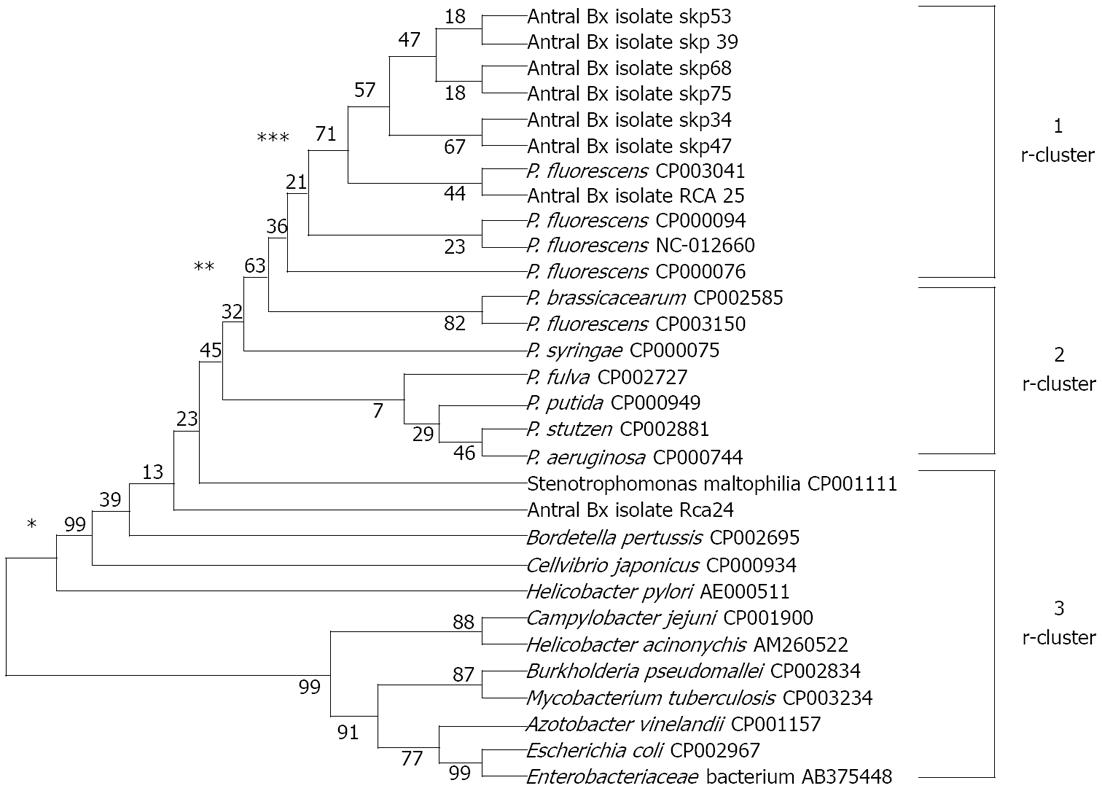Copyright
©2013 Baishideng Publishing Group Co.
World J Gastroenterol. Feb 21, 2013; 19(7): 1056-1067
Published online Feb 21, 2013. doi: 10.3748/wjg.v19.i7.1056
Published online Feb 21, 2013. doi: 10.3748/wjg.v19.i7.1056
Figure 5 Phylogenetic affiliation of the Pseudomonas fluorescens-like isolates (n = 8; partial sequences of HSP60) on the basis of HSP60 gene sequences.
The unrooted tree was generated using unweighted pair group method with arithmetic mean from evolutionary distance computed with bootstrap test of phylogeny using MEGA version 4 by aligning published sequences from Genbank of heat shock protein (HSP60) genes from 5 reference strains of Pseudomonas fluorescens (P. fluorescens), 6 other reference strains representative of the principal Pseudomonas phyla (accession number followed by species name in parentheses). For checking relatedness with other genera, we included HSP60 gene sequences from GenBank of 11 bacterial pathogens, namely Helicobacter pylori, Helicobacter acinonychis, Campylobacter jejuni, Enterobacter spp., Escherichia coli, Bordetella pertussis, Burkholderia pseudomallei, Stenotrophomonas maltophilia, Cellvibrio japonicus, Azotobacter vinelandii and Mycobacterium tuberculosis. Branches found by maximum likelihood are labeled with asterisks: one asterisk if bootstrap values = 99%, two asterisks if = 63% and three asterisks if = 71%.
-
Citation: Patel SK, Pratap CB, Verma AK, Jain AK, Dixit VK, Nath G.
Pseudomonas fluorescens -like bacteria from the stomach: A microbiological and molecular study. World J Gastroenterol 2013; 19(7): 1056-1067 - URL: https://www.wjgnet.com/1007-9327/full/v19/i7/1056.htm
- DOI: https://dx.doi.org/10.3748/wjg.v19.i7.1056









